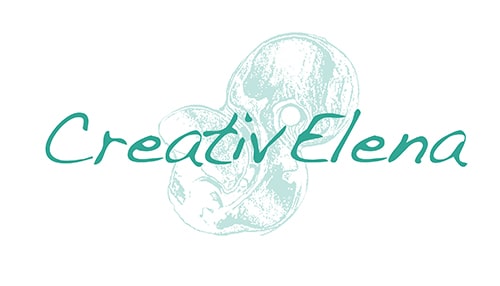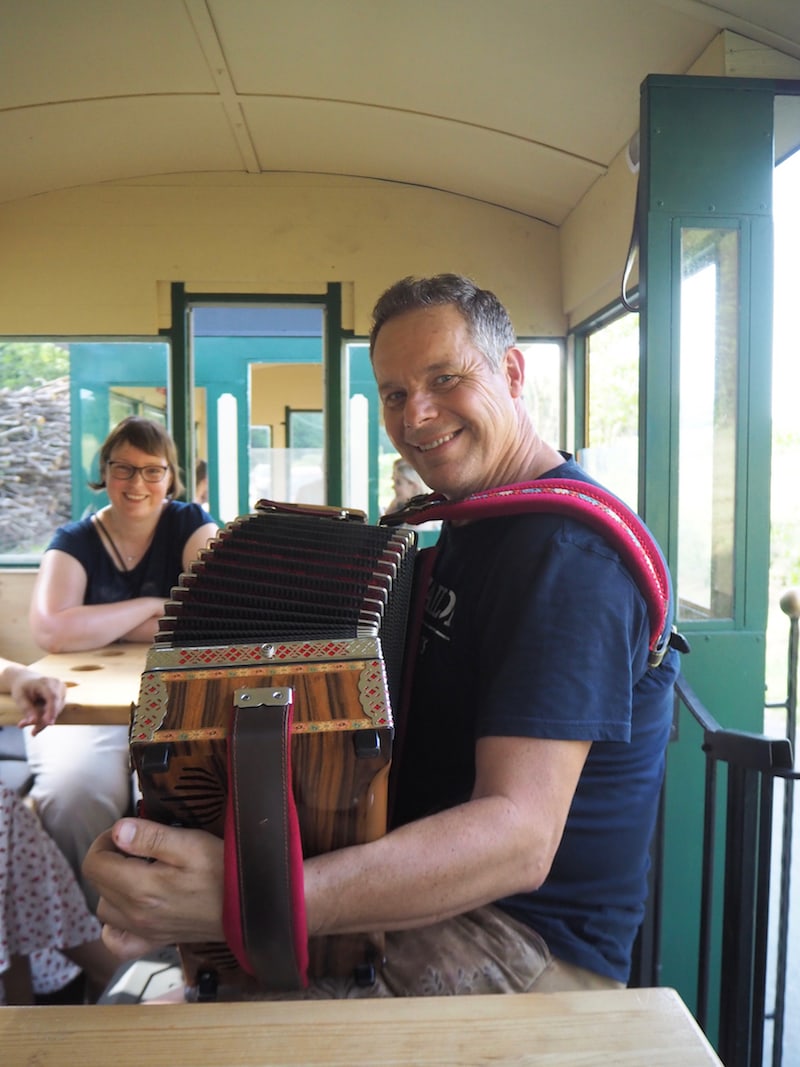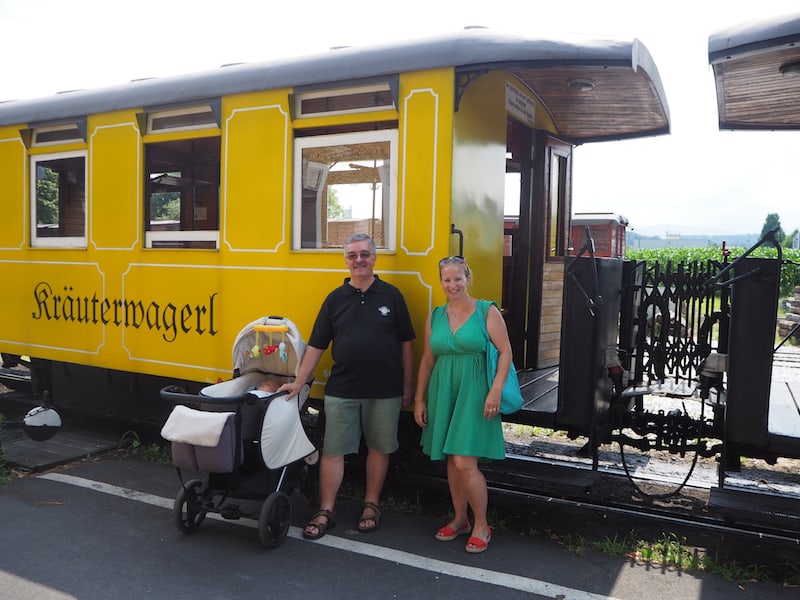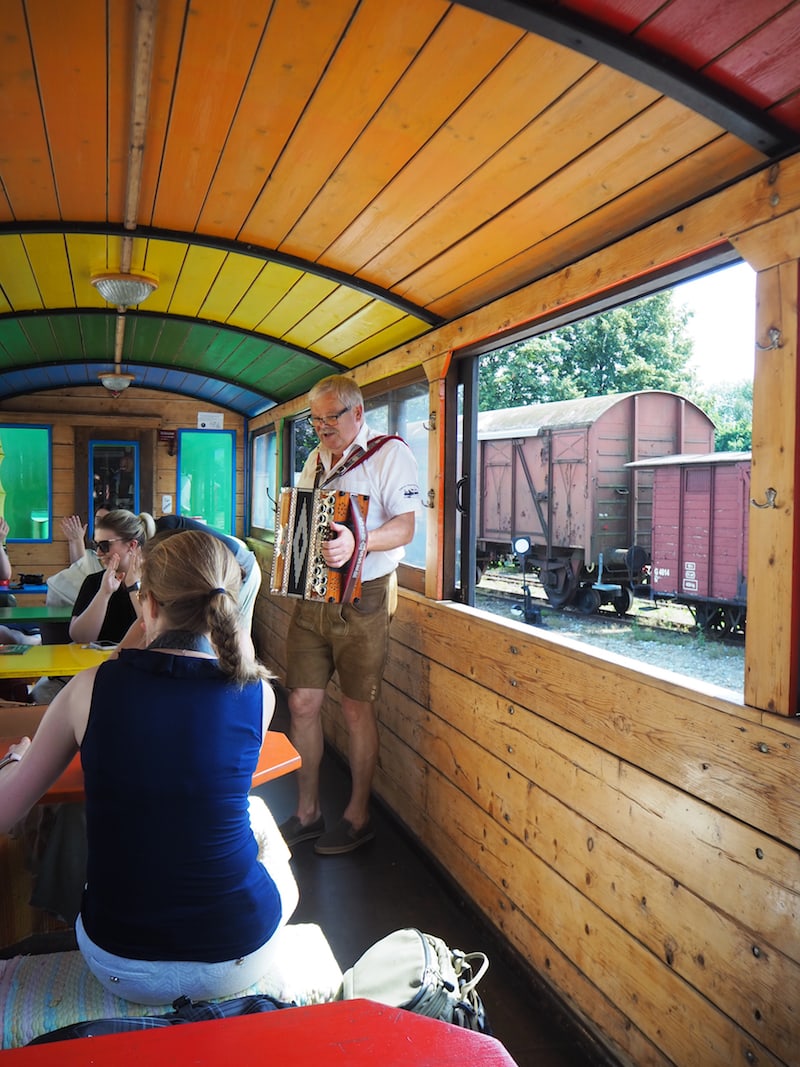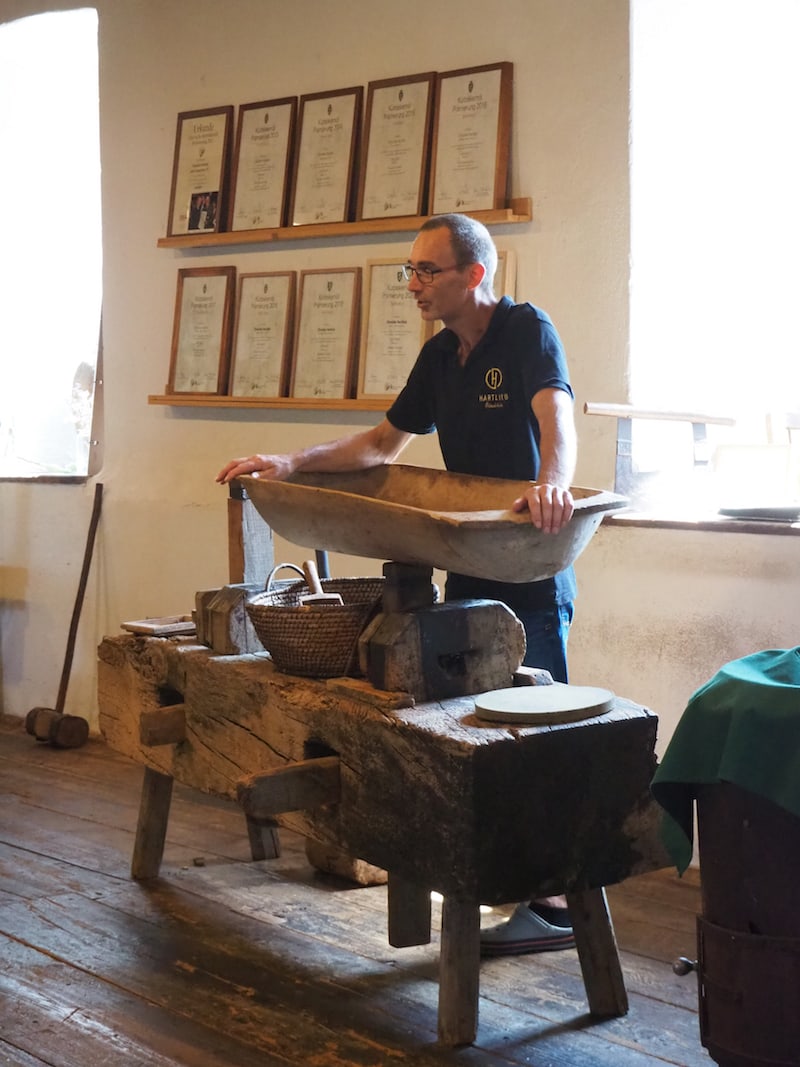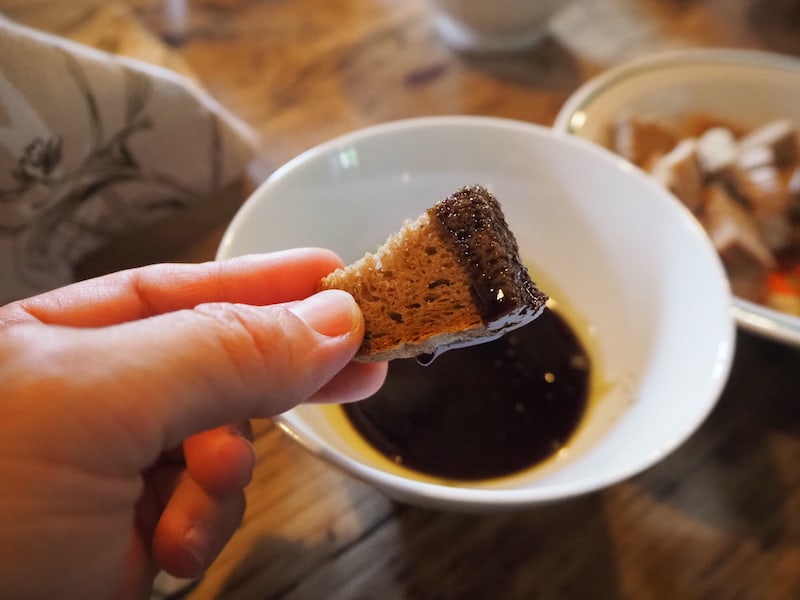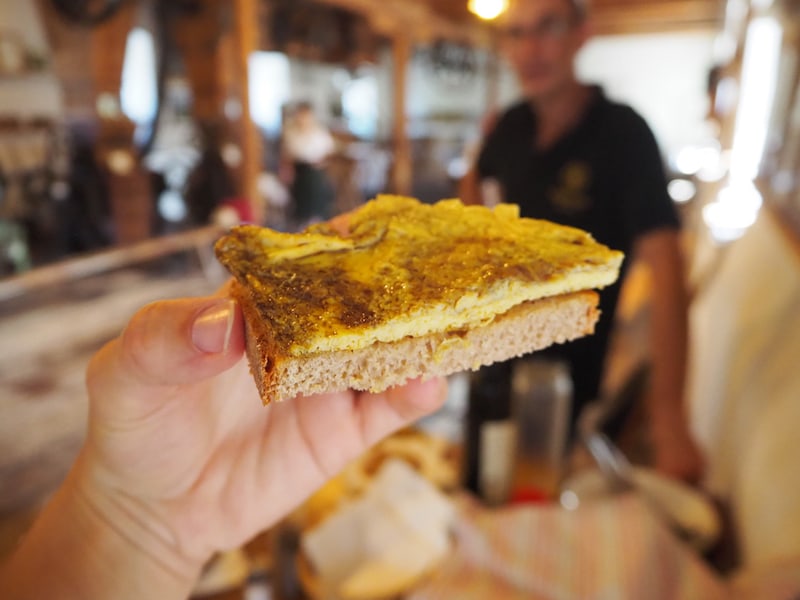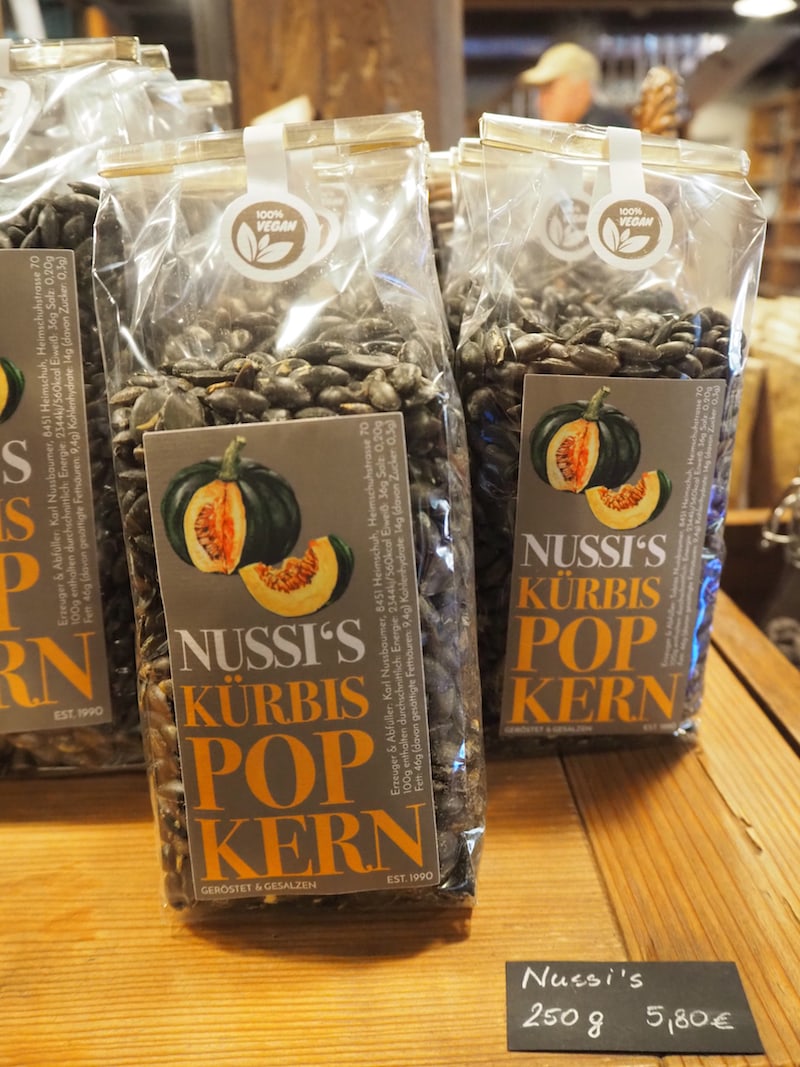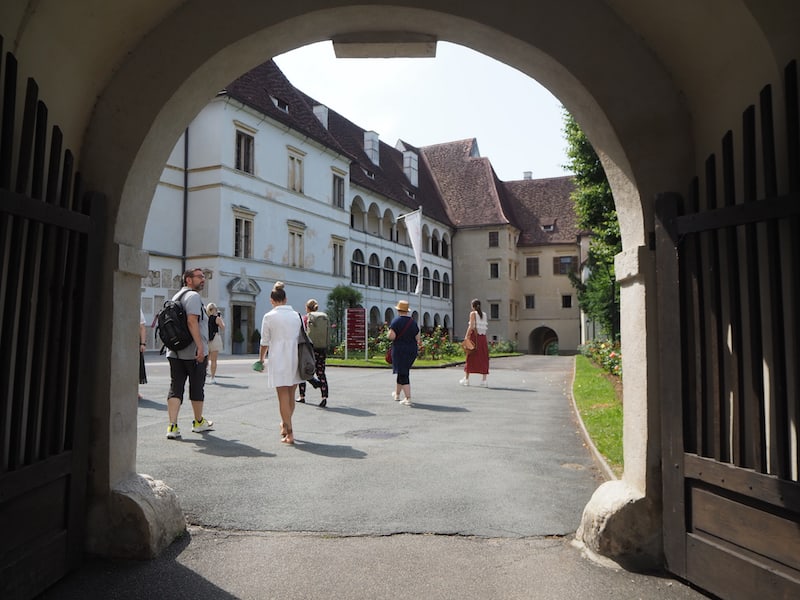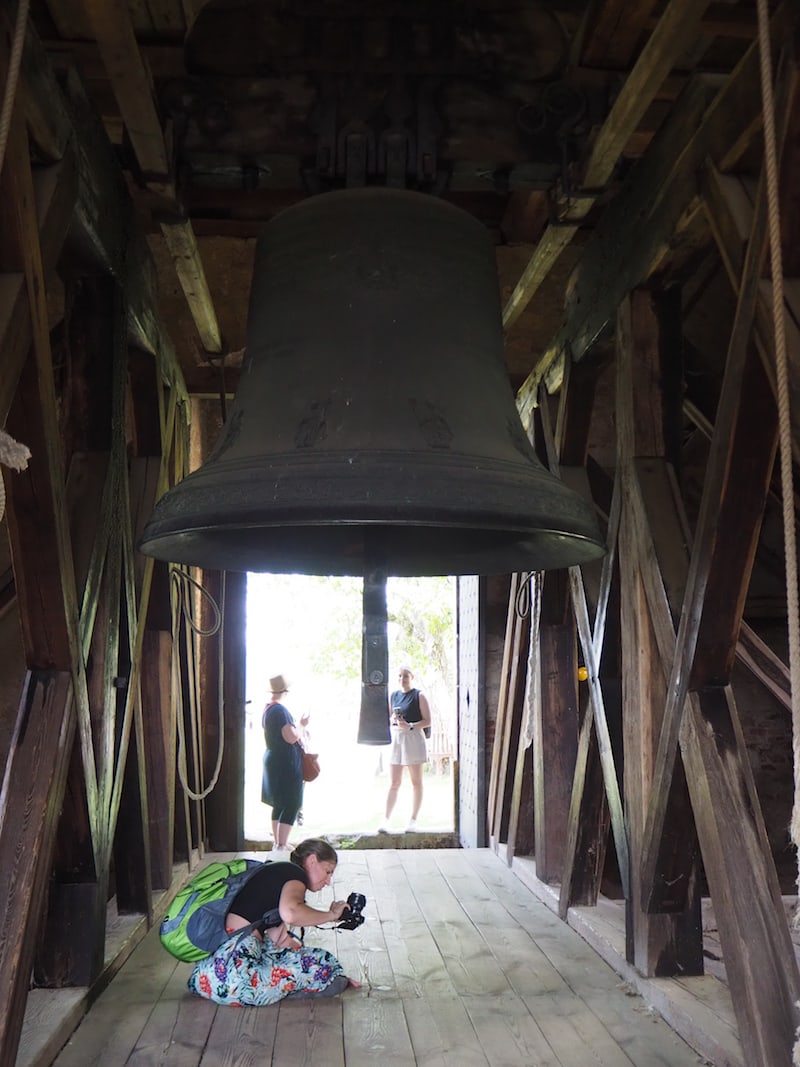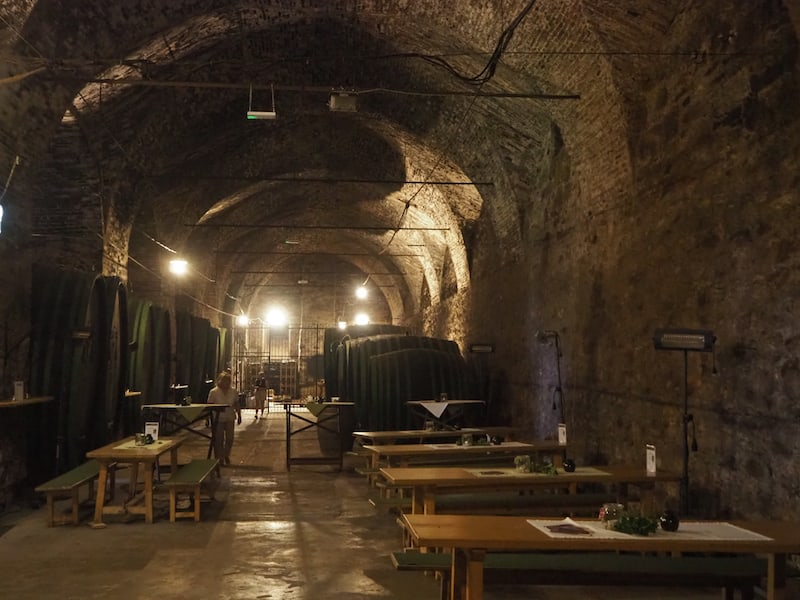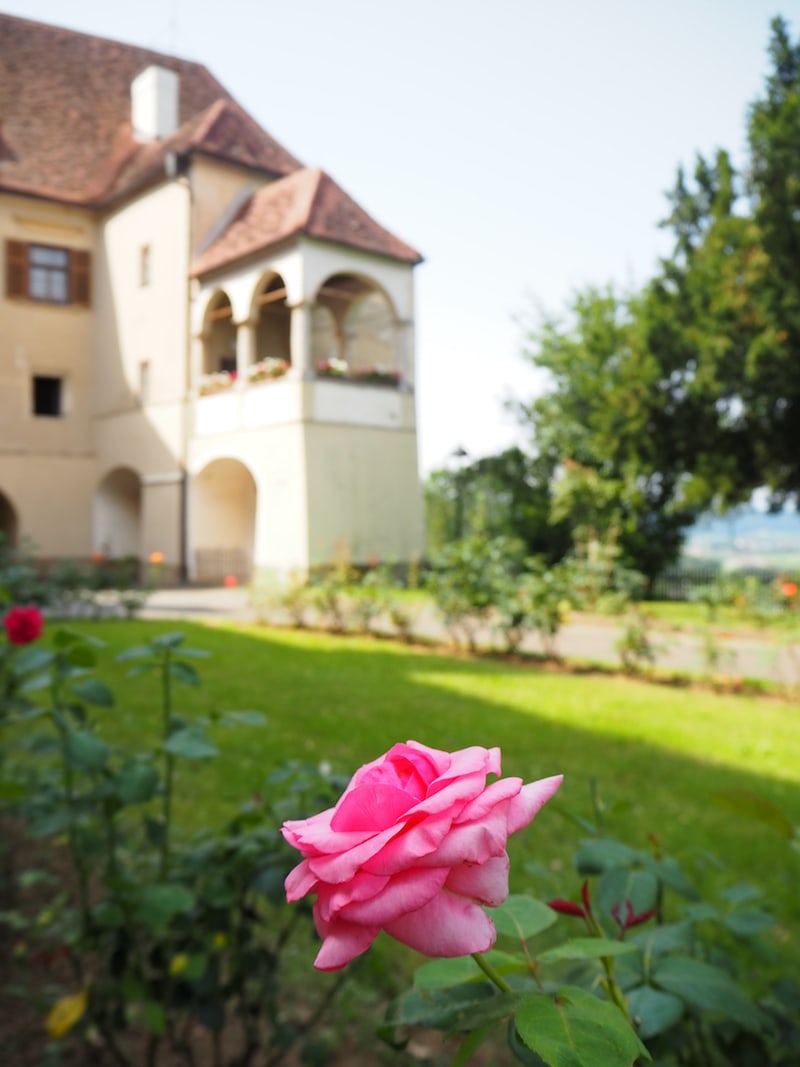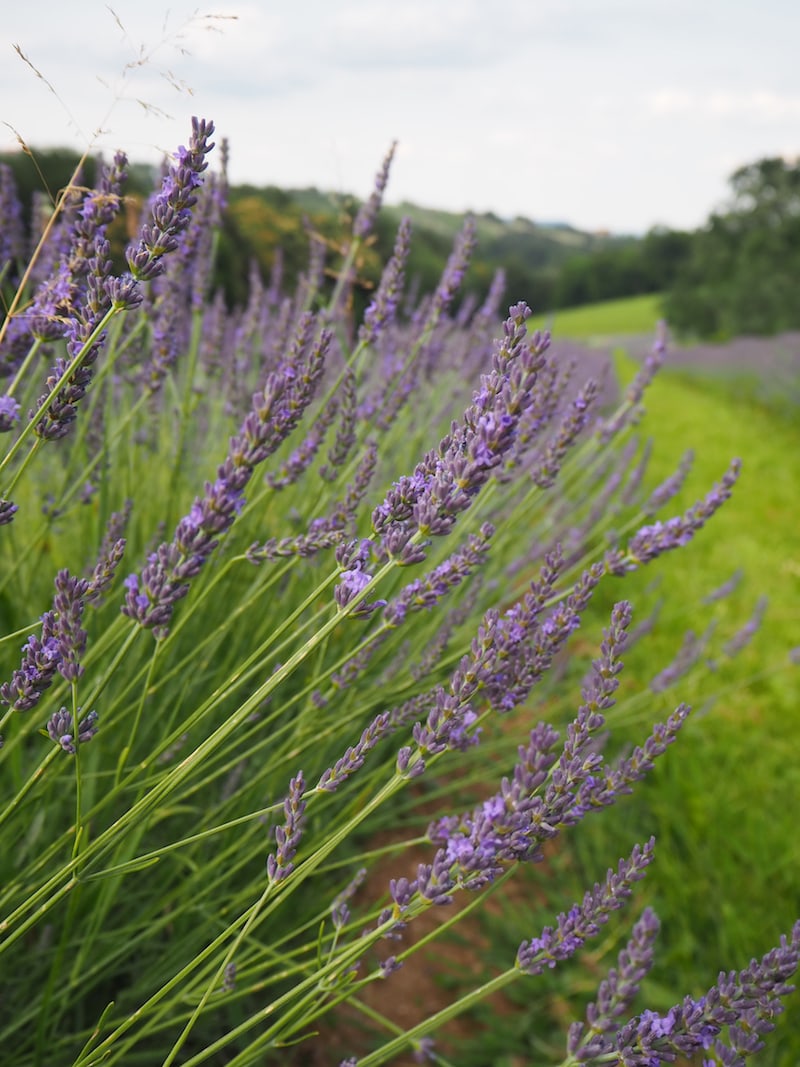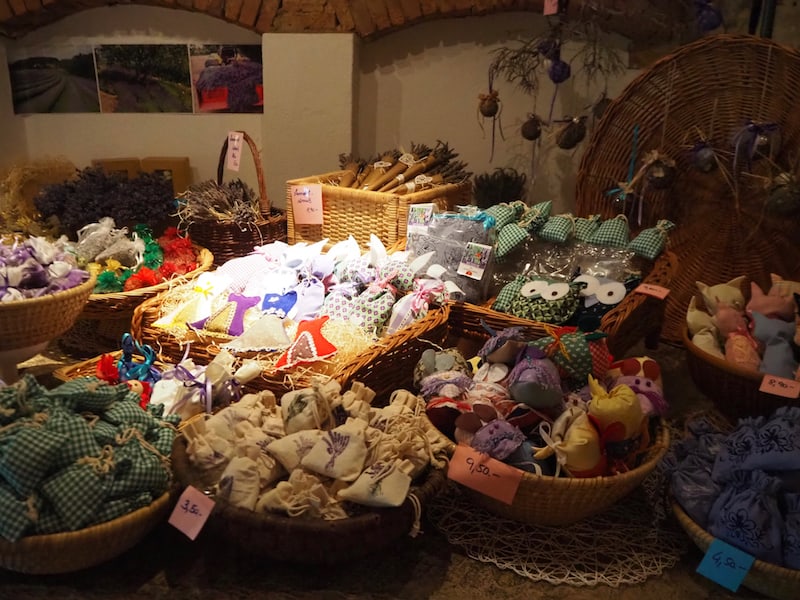Let’s head south – south in Austria for some southern holiday flair! South Styria on the border to Slovenia promises exactly that, plus some great activities focused on nature and culture exploration. You can already find some information about South Styria on my travel blog:
- Discover the racy Schilcher & Südsteiermark wine growing districts of Styria.
- Winesome Foodie Travel Tips for Graz & Styria #InAustria
- Gourmet Travel Tips in Southern Styria: Winesome Wonders For You.
… yet let me add some more recent tips from my last trip. Starting with the family-run accommodation Weinlandhof Gamlitz near the South Styrian Wine Route.
Weinlandhof Gamlitz: Sleep well on the South Styrian Wine Route.
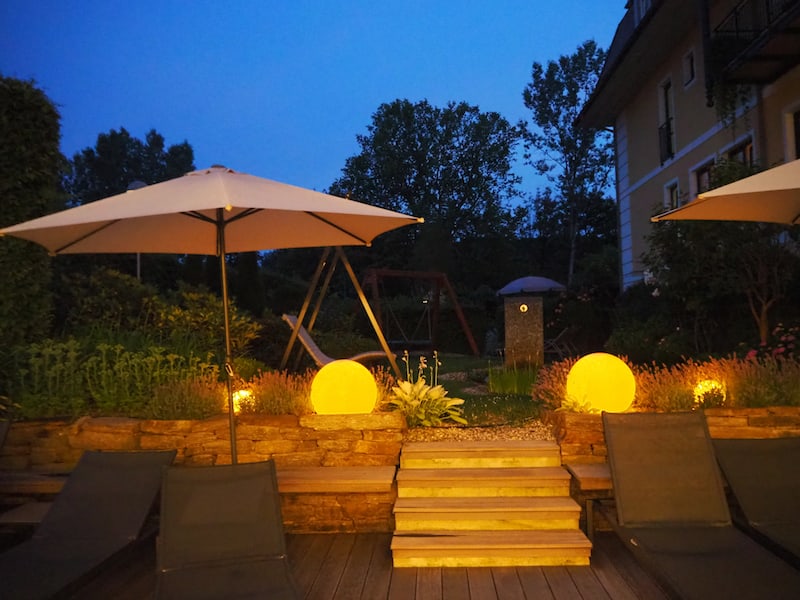
Good night from our hotel Weinlandhof Gamlitz: This is the view from the small spa and pool area into the garden at dusk.
Cosy, comfortable, a place to feel good – that’s my memory of the Weinlandhof in Gamlitz. The breakfast buffet leaves nothing to be desired; my room facing the garden gives me three quiet nights in a row. I like the fact that the hotel owner, after a short phone call, keeps the pool open an extra hour because we are late to return from the nearby Buschenschank restaurant … what a treat! Thank you very much, dear team of the Hotel Weinlandhof!
A trip with the “Weinbergbummler” slow train: Exploring the South Styrian Wine Route in style!
Growing up in the Kamptal wine region of Lower Austria, wine has always been present as a topic of conversation. Over the years, I have therefore always had an interest to explore beautiful South Styria, and in particular the South Styrian Wine Route. It wasn’t until I took the Weinbergbummler slow train, however, that I truly understood everything about the South Styrian Wine Route: So many discoveries left to be made, even after my many previous visits! The journey with the slow train is framed by music, there are chilled drinks and lots of breaks for stories and photos. Definitely plan a trip for your next visit to the region!
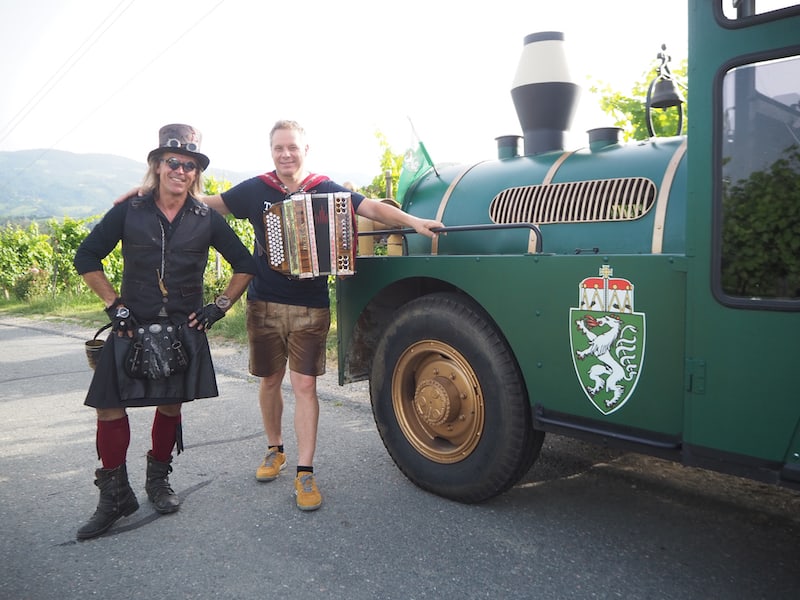
Armin Kapl (proud owner and driver of the Weinbergbummler slow train, picture on the left) and his friend …

… have us explore many sights along the South Styrian Wine Route, including this “border table” right at the border with neighbouring Slovenia.
“Stainzer Flascherlzug”: Yet another fun, slow train experience!
While the Weinbergbummler train actually runs on wheels (and thus is able to climb even smaller gravel roads on the South Styrian Wine Road), the Stainzer Flascherlzug slow train actually runs on rails. During the season (April to October), it travels from the towns of Stainz to Preding and back again; all in all, it takes about two hours. It’s not just the landscape that’s “colourful to look at” – the train with its brightly coloured carriages is too!
And because I asked you in my Instagram Stories what “Flascherlzug” (literally, bottle train in German) actually refers to, here’s the promised solution: It takes its name from the transport of urine bottles! Once, apparently, the local population took many of them on the train “to visit a miracle healer”, the young conductor on board tells me with a laugh. This is how today’s nostalgia train became known as the “Flascherlzug” bottle train – and still bears this name today.
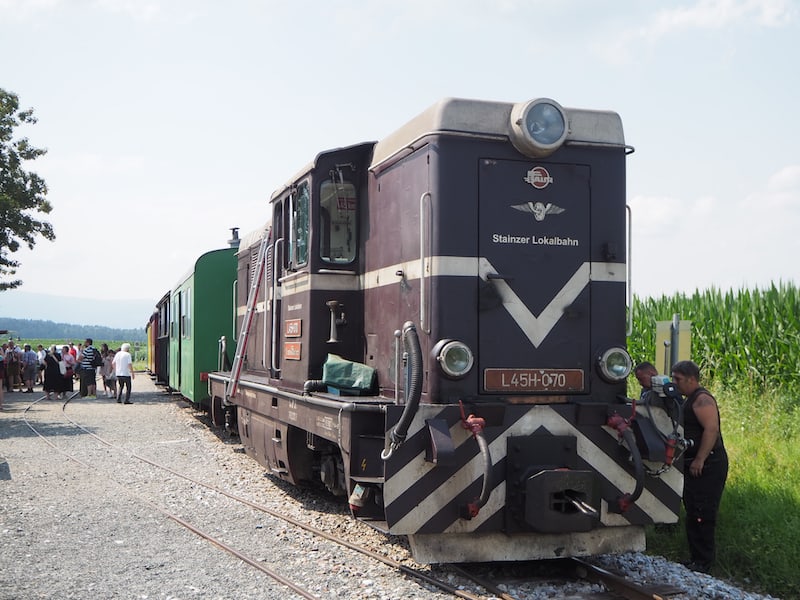
During the short stops along the way, we get off to check out the entire length of the train, including its historic locomotive.
Oil mill Hartlieb near Leibnitz in South Styria: Pumpkin seed oil at its best.
After a visit to the Hartlieb oil mill you will know everything there is to know about pumpkin seed oil. Martin, who welcomes us on the day of our visit, talks passionately about his business and the craft of pumpkin seed oil processing. Pumpkin seed oil is also known as the “green-black gold” of Styria, and has helped the region to achieve a certain reputation and prosperity. In fact, Martin enthusiastically tells us that about 200 years ago the pumpkin spontaneously mutated and no longer formed a skin around the seed: this made it easier and faster to harvest the seeds; instead of typical cattle feed, the value of the oil inside was discovered. We listen with fascination, taste some oil of course, and once again I sink into the pleasure of sampling the nutty-tasting, dark green-black pumpkin seed oil – an oil that my three-year-old son for instance already loves to put on his salad.
A touch of culture: Seggau + Deutschlandsberg Castles.
You can learn even more about the history of the region, as well as Styria as a whole, during a visit to Seggau Castle. Our charming guide Gertrude Pölzl explains the historical context, points out the importance of tourism through seminar and holiday guests, opens our eyes to the modern St. Michael’s Chapel and the historic wine cellar (both worth seeing). Did you know that the so-called Seggauer Liesl, a five-ton bell, can be struck by hand? No? Then you should definitely check out Seggau Castle.
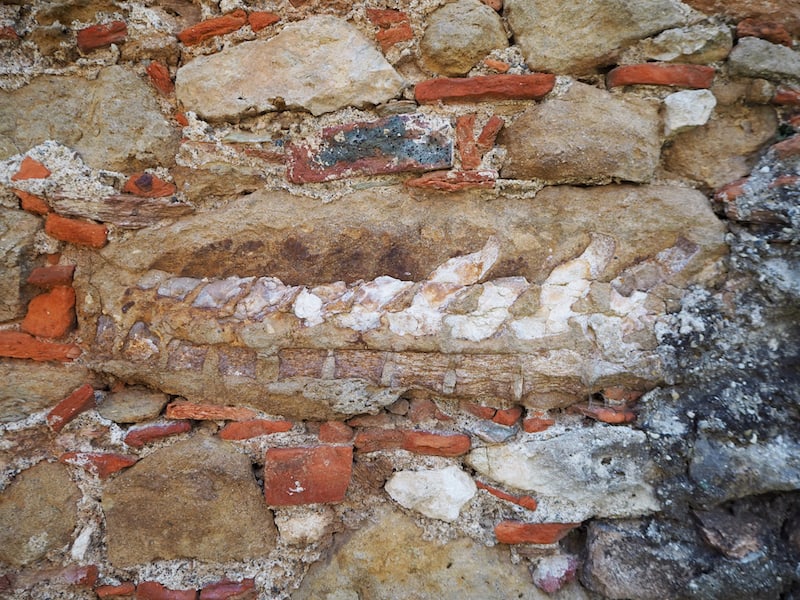
… on our way to the wine cellar, this detail fascinates me: In the old stone wall you can see the backbone of a manatee many million years old … I mean, WOW
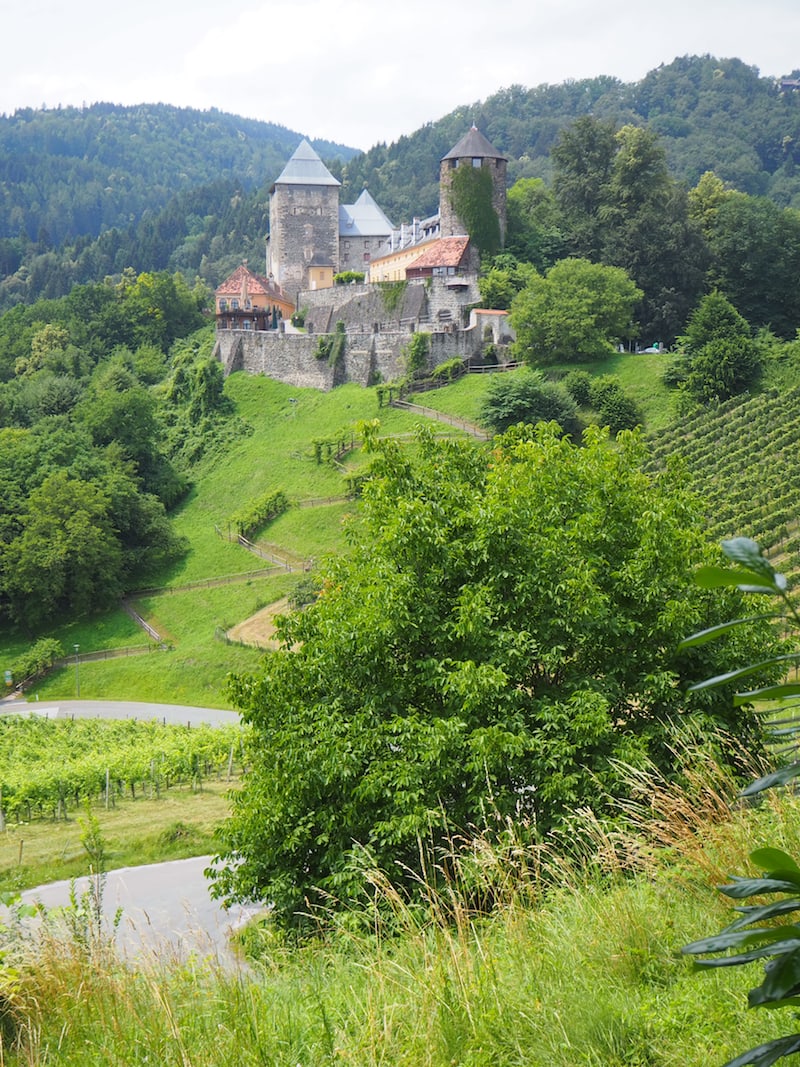
Check out nearby Deutschlandsberg Castle, too – we haven’t had the time to visit properly, but I can guarantee you it’ll be worth your while. Next time for me, then ..!
Last but not least: Wunsum Lavender fields in South Styria!
Lavender fields? In South Styria? You bet! The largest lavender fields in Austria can be found near Kitzeck im Sausal, with a cultivation area of around two hectares! We talk to the charming owner about the balancing act between caring for the fields and the negative aspects of the “photo hype” that they sometimes trigger: Please pay attention to the plants and the surroundings at every step of your visit. They will thank you with much fragrant love.
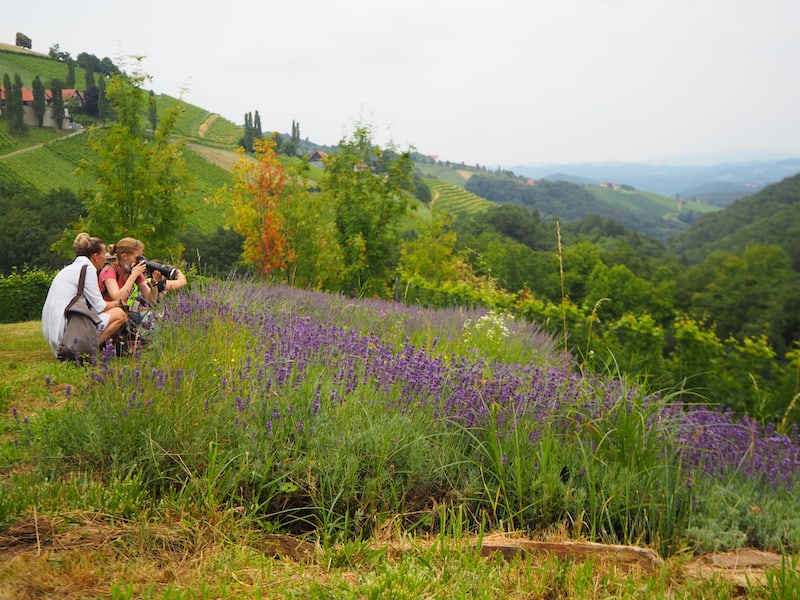
The name “Wunsum” by the way is derived from a bishop who is said to have worked in the area in the past.
Last but not least, I have made the following travel video about South Styria for you:
[su_youtube url=”https://www.youtube.com/watch?v=8tq-0aWq45Q” width=”800″]
Check out my second blog post leading you to many tips about local food and wine explorations in South Styria. You may also want to go through my picture gallery about our trip here:
Disclaimer: We have been invited by the South Styria and Styria tourism board to explore the South Styrian wine and food travel district. All opinions are my own.
